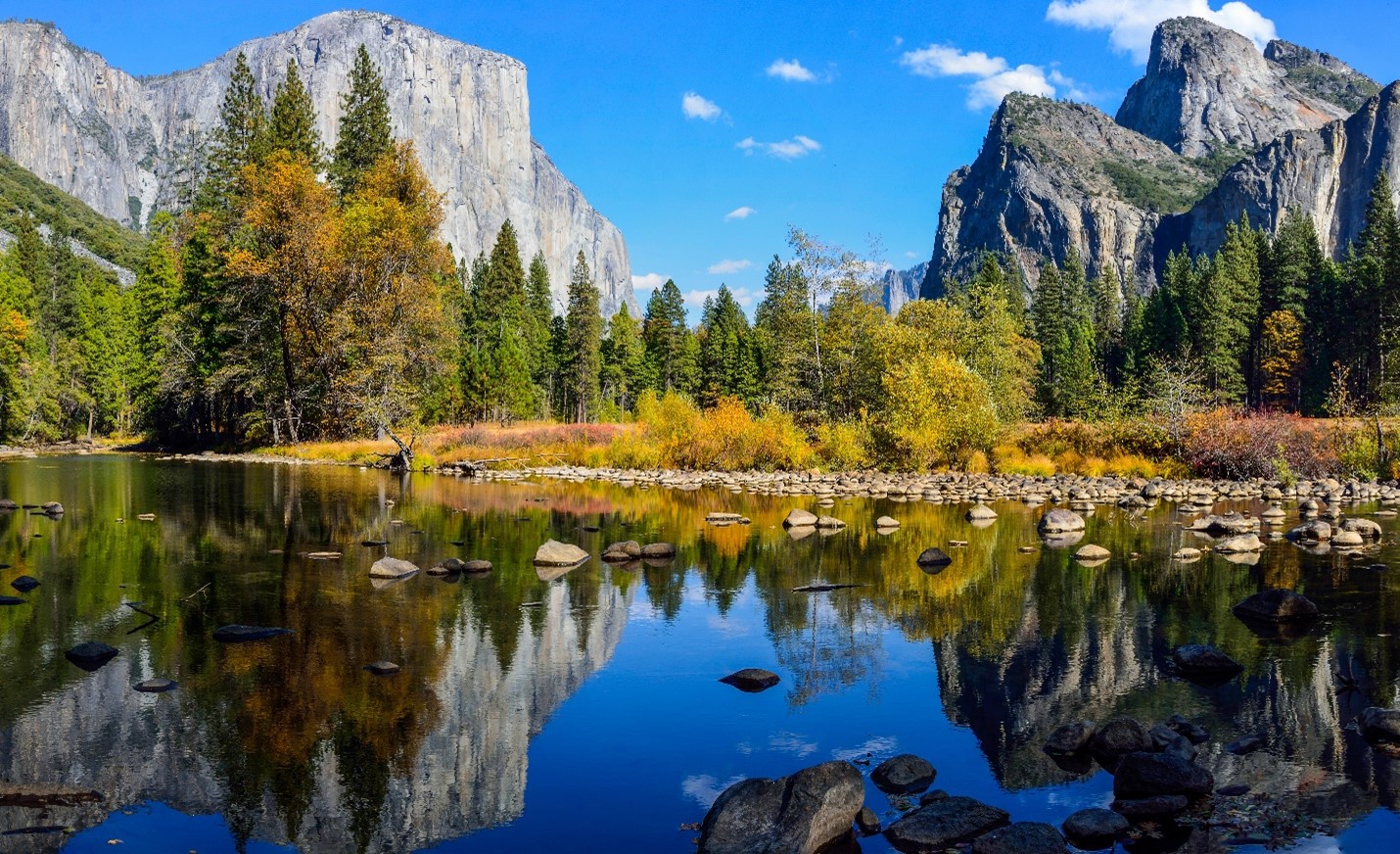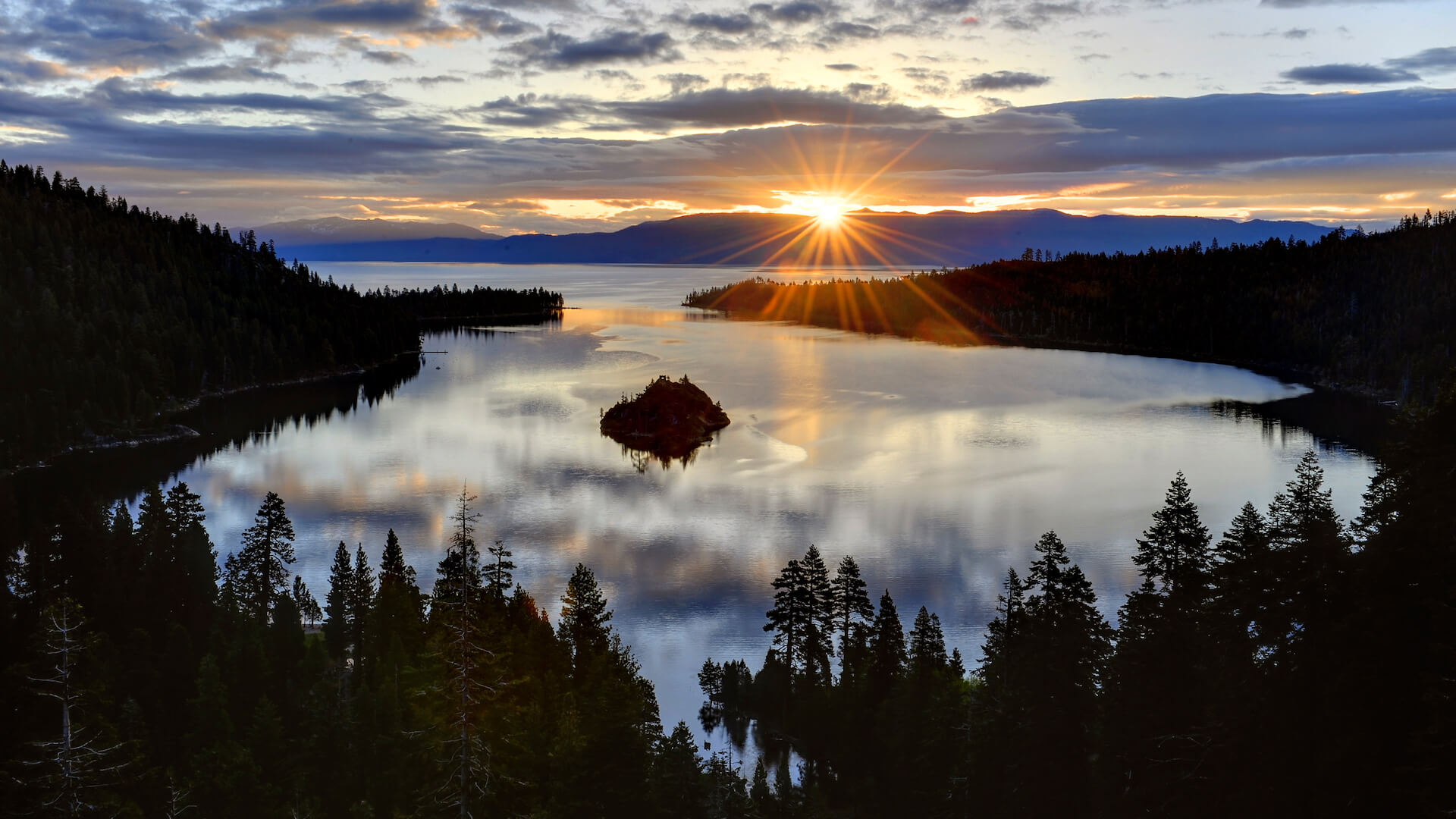TWO GEOLOGICAL GEMS: YOSEMITE AND LAKE TAHOE
By Michael Jameson, Regulatory Specialist (Tulsa, OK)
Michael Jameson holds degrees from Oklahoma State University (Stillwater), the University of Oklahoma (Norman) and the University of Michigan (ABD – Ann Arbor). In serving his entire tenure as a Regulatory Specialist with Vanguard, he founded the company in 1992 and is ranked at the “expert” level in chess.
Yosemite National Park: A Natural Wonder Facing Environmental Challenges
Yosemite National Park, established in 1890, is a breathtaking expanse of granite cliffs, cascading waterfalls, and ancient giant sequoias. Spanning over 1,187 square miles in California's Sierra Nevada, it attracts millions of visitors each year, drawn to its stunning landscapes and rich biodiversity. However, the park is not just a natural treasure; it is also a site of significant environmental challenges that threaten its delicate ecosystems.

Yosemite is home to a diverse range of flora and fauna, with over 400 species of vertebrates and more than 1,500 plant species. The park's varied elevations create distinct habitats, from lush meadows to high alpine environments. However, this biodiversity is increasingly under pressure from various environmental issues, including climate change, invasive species, and human activity.
One of the most pressing concerns for Yosemite is climate change. Rising temperatures have led to altered precipitation patterns, which affect the park's ecosystems. Snowpack, vital for sustaining river flows during the dry summer months, is diminishing. This not only hinders the aquatic habitats within the park but also reduces water availability for surrounding communities. Furthermore, changes in climate influence the timing of blooming for plants and migration patterns for wildlife, disrupting established ecological relationships.
Wildfires are a natural part of the Sierra Nevada ecosystem, playing a crucial role in maintaining forest health. However, climate change has intensified wildfire risks, leading to more frequent and severe fires. In recent years, Yosemite has experienced significant wildfires that not only threaten wildlife habitats but also impact air quality and human health. Efforts to manage these fires while balancing ecological needs pose ongoing challenges for park management.
The introduction of non-native species is another significant issue affecting Yosemite's ecosystems. Invasive plants and animals can outcompete native species for resources, disrupting the balance of the park's ecosystems. Management efforts are ongoing to control these invasive populations, but they require significant resources and long-term commitment.
With approximately 4 million visitors annually, the human footprint on Yosemite is profound. Overcrowding can lead to soil erosion, wildlife disturbances, and habitat degradation. The park's infrastructure struggles to cope with the influx of tourists, leading to increased waste, traffic congestion, and degradation of natural sites. Effective visitor management strategies are essential to mitigate these impacts, including promoting sustainable tourism practices and encouraging off-peak visits.
Despite these challenges, there are ongoing conservation efforts aimed at protecting Yosemite's natural treasures. The National Park Service collaborates with various organizations to implement restoration projects, conduct research, and engage in community education. These initiatives focus on habitat restoration, invasive species management, and climate adaptation strategies to build resilience within the park’s ecosystems.
Yosemite National Park stands as a symbol of natural beauty and ecological significance. However, the environmental challenges it faces are substantial and require collective action. By raising awareness and promoting sustainable practices, both visitors and management can work together to protect this iconic landscape for future generations. Preserving Yosemite is not just about safeguarding a national park; it’s about ensuring the integrity of a vital ecosystem that plays a crucial role in our planet's environmental health.
Lake Tahoe: A Unique Ecosystem at Risk
Lake Tahoe, located in the Sierra Nevada mountain range – and on the border between California and Nevada – is one of the most pristine and ecologically significant freshwater lakes in the United States. It is renowned for its clarity, stunning alpine scenery, and the array of recreational activities it offers. Yet, beneath its crystal-clear surface and alongside its iconic landscapes, Lake Tahoe harbors a rich and diverse array of biological life, both terrestrial and aquatic.

Lake Tahoe is the largest alpine lake in North America and the second-deepest lake in the United States, with a maximum depth of 1,645 feet. It spans 191 square miles and sits at an elevation of 6,225 feet. The lake’s watershed includes diverse landscapes, from dense coniferous forests to alpine meadows, steep cliffs, and rocky shorelines. This variety of habitats supports an impressive range of plant and animal species, many of which are adapted to the region's harsh winters and mild summers.
The area surrounding Lake Tahoe consists of both national forests and state parks, including the Lake Tahoe Basin Management Unit and the Desolation Wilderness. These protected lands help preserve the lake's biodiversity, though they face pressures from human activity, invasive species, and climate change.
The aquatic ecosystem of Lake Tahoe is home to a number of specialized species, many of which are endemic or adapted to the unique conditions of the lake. Historically, Lake Tahoe was home to only a few native fish species. Among them was the Lahontan cutthroat trout, once the largest trout species in North America. However, this iconic species was overfished and displaced by non-native fish during the 19th and 20th centuries, and it is now considered extinct in the lake. Efforts are ongoing to reintroduce this species into the lake, though its return remains uncertain.
Currently, Lake Tahoe is populated by several introduced fish species, including the lake's primary predators, such as the smallmouth bass and the rainbow trout. The lake’s food chain also includes various species of smaller fish, such as the tui chub, which serves as prey for larger predators. In addition, Tahoe is home to the Tahoe sucker, a native species that thrives in the lake's rocky bottom. This fish is vital to the lake's ecosystem, as it feeds on algae and detritus, helping to maintain water quality.
Lake Tahoe’s nutrient levels are naturally low, which historically contributed to the lake's exceptional clarity. However, increasing nutrient runoff from urban and agricultural development in the surrounding area has led to an uptick in algae growth, threatening the clarity of the water. One of the most concerning developments in recent years has been the proliferation of invasive algae species, such as the non-native Eurasian watermilfoil, which has altered native aquatic plant communities and disrupted the local food web.
The lake's bottom-dwelling ecosystem supports a diverse array of invertebrates. Among these are species of snails, worms, and crustaceans that are adapted to the lake's cold temperatures and low nutrient conditions. One notable example is the Tahoe yellowcress, an aquatic plant that grows in the shallow waters of the lake and provides habitat for various invertebrates. The lake is also home to a variety of freshwater clams, including the native Lake Tahoe mussel, which serves as an important filter feeder. This mussel species helps maintain the lake's clarity by filtering out particulate matter from the water. However, the spread of invasive species like the quagga and zebra mussels poses a significant threat to the native invertebrate population.
The biodiversity of the terrestrial ecosystem surrounding Lake Tahoe is impressive, ranging from high-altitude alpine meadows to dense forests of conifers. The region supports a wide variety of plant and animal species that are adapted to the varying environmental conditions, from the snowy winters to the relatively warm summers.
The vegetation around Lake Tahoe is dominated by coniferous forests, with species like ponderosa pine, Jeffrey pine, and white fir playing a central role in the landscape. These trees provide critical habitat for birds and mammals, and their seeds are a food source for many species. In addition to conifers, the region supports a variety of shrubs and wildflowers, including the Tahoe yellowcress, which is a rare and endangered species. This plant grows around the rocky shores of the lake and is sensitive to environmental changes such as fluctuating water levels and human development. Protecting this species has become a focal point of conservation efforts in the region.
Lake Tahoe's terrestrial fauna includes a variety of mammals, birds, and reptiles. The area is home to black bears, mule deer, and coyotes, which roam the surrounding forests and meadows. Larger carnivores like mountain lions also inhabit the area, although their populations are relatively low. Bird species are abundant around the lake, with over 200 species identified in the region. Notable species include the California gull, the common loon, and the peregrine falcon. These birds rely on the lake's clear waters and abundant fish populations to sustain them during migration and nesting.
The region is also home to various amphibians and reptiles, including the western toad and the Sierra Nevada yellow-legged frog, both of which are of particular conservation concern. The latter species, in particular, has seen significant population declines due to habitat loss, disease, and predation from non-native fish.
Despite its relatively remote and protected status, Lake Tahoe's biodiversity is under threat from several factors, many of which are the result of human activity. Invasive species pose one of the most significant threats to Lake Tahoe’s ecosystems. Non-native fish species like smallmouth bass, largemouth bass, and rainbow trout have displaced native fish populations and caused imbalances in the lake’s food web. Invasive aquatic plants like Eurasian watermilfoil also threaten the lake’s native plant species and the overall health of the ecosystem.
Urban development around the lake, combined with increasing tourist traffic, has led to significant pollution in the watershed. Runoff from roads, construction sites, and urban areas carries excess nutrients such as nitrogen and phosphorus into the lake, leading to algal blooms and a decline in water clarity. Invasive species, nutrient enrichment, and other pollution sources contribute to the degradation of aquatic habitats.
Climate change is also a major concern for Lake Tahoe’s biodiversity. Rising temperatures are altering the lake's thermal structure, which in turn, impacts the aquatic species that rely on cold, oxygen-rich waters. Warmer temperatures may also lead to shifts in plant and animal distributions, with some species being forced to migrate to higher elevations or cooler waters. Climate change also exacerbates the risks posed by invasive species and increases the frequency of extreme weather events, which can further disrupt ecosystems.
Efforts to conserve and protect Lake Tahoe's biodiversity have been underway for decades. Organizations such as the Tahoe Regional Planning Agency (TRPA), the Lake Tahoe Basin Management Unit (LTBMU), and various local environmental groups are working to address threats from invasive species, pollution, and climate change. Conservation initiatives include water quality monitoring, habitat restoration, and the implementation of stricter regulations on development and tourism. One significant success story in the region is the restoration of the Tahoe yellowcress, which has been supported by habitat preservation and the reduction of human impact along the shoreline.
Lake Tahoe’s biodiversity is a testament to the resilience and richness of natural ecosystems, but it faces numerous challenges. Protecting this unique and irreplaceable environment requires continued vigilance and collaboration between government agencies, conservation organizations, and the public. Moving forward, efforts to address invasive species, pollution, and climate change will be crucial to ensuring that Lake Tahoe remains a vibrant and diverse ecological treasure for future generations.